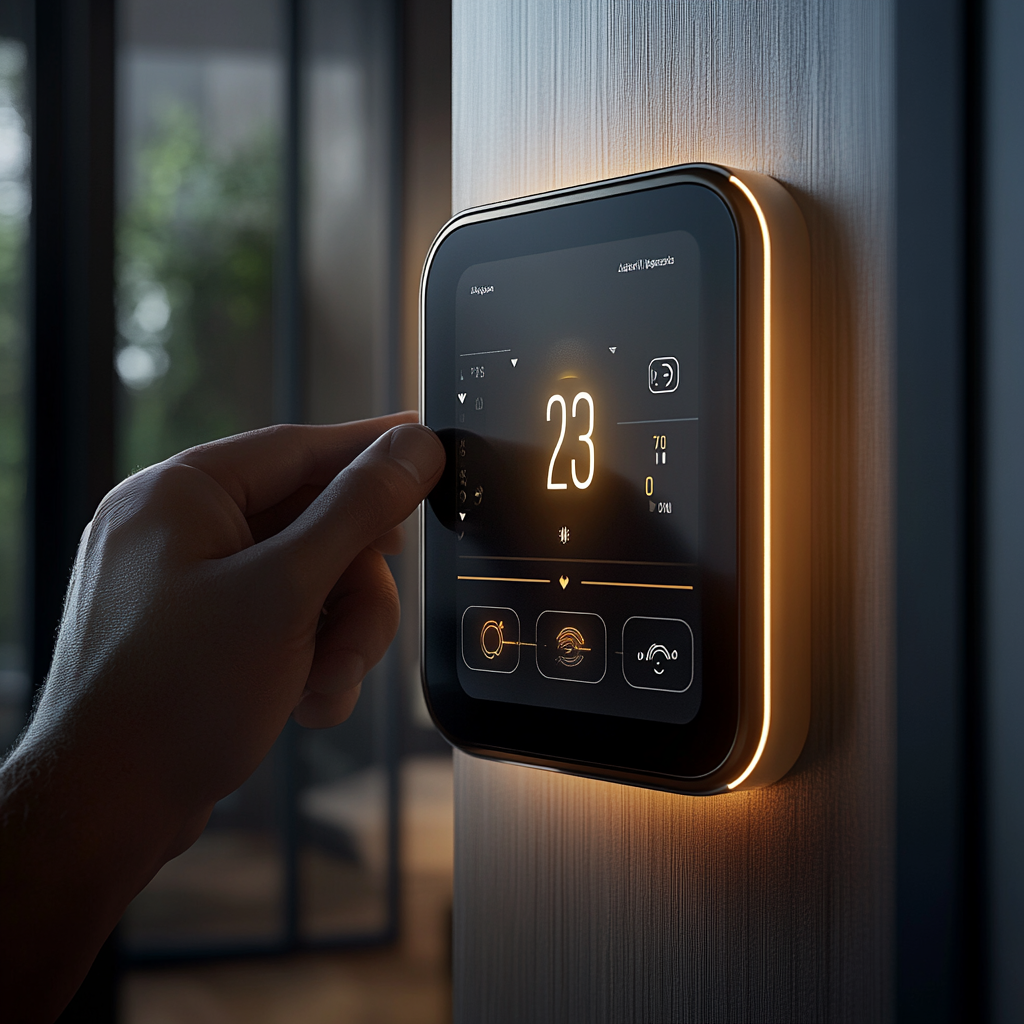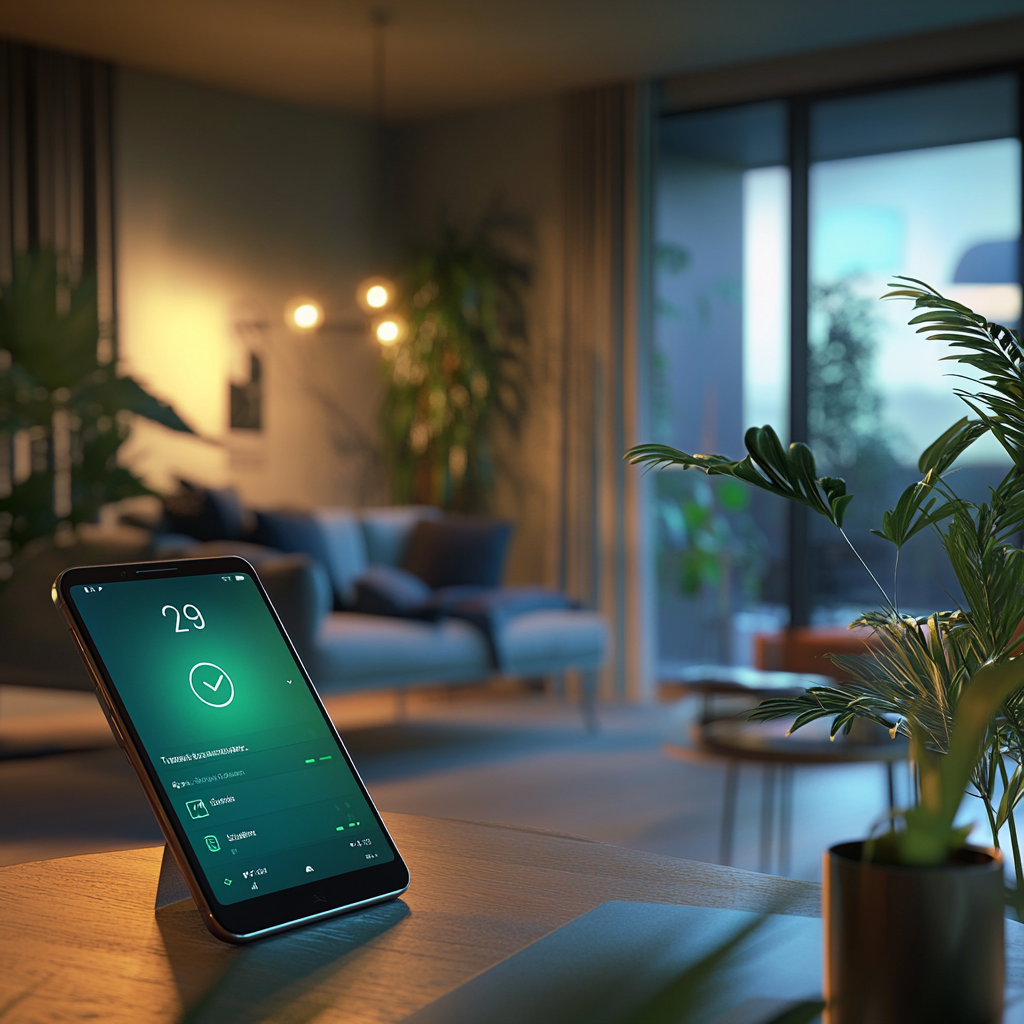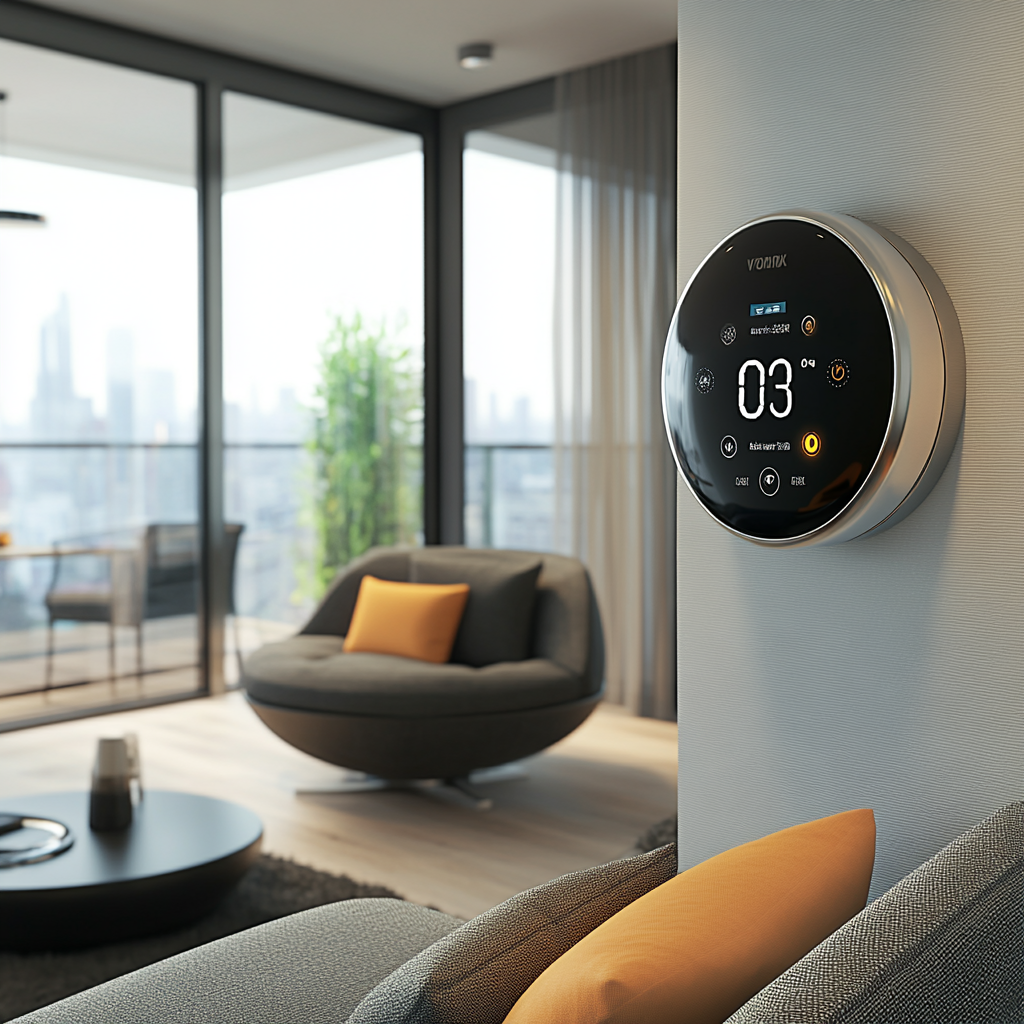Introduction: Why Smart Thermostats Matter
Imagine coming home on a hot summer day, and without lifting a finger, the temperature has already adjusted to the perfect cool setting. Or, in the middle of winter, your heating system anticipates when you’re on your way home from work and warms the house up just in time. This is the future of home automation, driven by smart thermostats.
In today’s world, we are not only focused on convenience but also on efficiency. Smart thermostats are bridging the gap between comfort and energy savings, transforming how we manage indoor climate control. In this article, we’ll explore how these cutting-edge devices work, their top features, and why they’re becoming a must-have in homes.
What Are Smart Thermostats?
The Evolution of Thermostats
Thermostats have evolved drastically over the years. Gone are the days of manual dials and switches. Today’s smart thermostats are intelligent devices that connect to the internet, allowing you to control them remotely via smartphone apps.
How Smart Thermostats Work
Smart thermostats use Wi-Fi, AI algorithms, and sensors to track your temperature preferences and routines. Over time, they learn your habits and optimize temperature settings to save energy without sacrificing comfort. Some advanced models even factor in weather conditions and adjust accordingly.
Why Are Smart Thermostats Important for Energy Efficiency?
Energy Savings: The Big Benefit
According to the U.S. Department of Energy, heating and cooling account for almost half of the energy usage in a typical American household. Smart thermostats can reduce your energy consumption by up to 10% annually, which translates to lower utility bills and a reduced carbon footprint.
Read more on energy savings with smart thermostats from the U.S. Department of Energy.
How Smart Thermostats Achieve Efficiency
These thermostats work by learning your daily routine. For instance, if you regularly leave the house at 8 AM and return at 6 PM, the thermostat will automatically adjust to an energy-saving mode during your absence and return to your preferred temperature before you arrive home.
Stats Speak: The Impact of Smart Thermostats
According to Energy Star, homes using smart thermostats see an average reduction of 10-12% in heating costs and 15% in cooling costs. Over the course of a year, that can save homeowners hundreds of dollars while also helping reduce energy waste.
Top Features of Smart Thermostats

1. AI Learning Capabilities
AI is at the heart of smart thermostats. As you adjust the temperature or set specific schedules, the thermostat learns and adapts. Over time, it predicts your preferences and eliminates the need for manual changes.
2. Geofencing Technology
Geofencing is a feature that uses your smartphone’s location to detect whether you’re home or away. When you leave, the thermostat automatically switches to an energy-saving mode, and when you return, it adjusts to your preferred settings. Learn more about geofencing technology from Tom’s Guide.
3. Voice Assistant Integration
Most modern smart thermostats integrate with Alexa, Google Assistant, and Siri, allowing you to adjust the temperature with simple voice commands. This integration enhances convenience and creates a fully hands-free experience.
4. Energy Monitoring and Reporting
Smart thermostats often provide detailed energy usage reports, showing how much energy you’ve used and how much you’ve saved. This feature allows homeowners to better understand their consumption patterns and adjust behaviors accordingly.

The Top 3 Smart Thermostat Brands
1. Google Nest Thermostat
The Google Nest Thermostat is a market leader with its sleek design and user-friendly interface. It integrates well with other Google products and uses advanced AI learning to adjust to your preferences. Learn more about the Google Nest Thermostat.
2. Ecobee SmartThermostat
The Ecobee SmartThermostat stands out for its remote sensors, which help monitor temperatures across multiple rooms. This makes it perfect for larger homes where maintaining consistent comfort is key.
3. Honeywell Home T9
The Honeywell Home T9 offers robust scheduling and geofencing capabilities, ensuring your home stays energy efficient while you’re away. The intuitive touchscreen display makes it easy to control the system.
Discover Honeywell’s T9 Smart Thermostat.
The Role of Smart Thermostats in a Smart Home Ecosystem
Smart thermostats don’t just stop at controlling temperature—they integrate with other smart home devices like lights, security cameras, and door locks. Imagine this: you leave home, your thermostat adjusts to energy-saving mode, your lights turn off, and your security system arms itself—all automatically. Welcome to the smart home ecosystem.
Are Smart Thermostats Worth the Investment?
Cost vs. Savings
While smart thermostats might seem like an expensive purchase upfront, they pay for themselves in energy savings. Over a few years, the cost reduction in utility bills alone makes the initial investment worthwhile.
The Environmental Impact
Using smart thermostats doesn’t just save money—it also helps reduce your home’s carbon footprint. With optimized heating and cooling, you’re contributing to a more sustainable future.
Challenges of Smart Thermostats
1. Privacy Concerns
With so much data being collected on your habits, it’s normal to worry about privacy. However, most smart thermostat brands provide robust data encryption and privacy settings to keep your information secure. Read more about privacy concerns with smart homes.
2. Compatibility with Older HVAC Systems
Not all HVAC systems are compatible with smart thermostats. It’s important to check whether your heating and cooling systems can integrate with smart technology before purchasing.
The Future of Smart Thermostats
The future of smart thermostats is tied to advancements in AI and renewable energy. As these technologies evolve, we may see thermostats that can predict energy surges, adjust to solar power, and even communicate with other smart devices to create a seamless home environment.
Conclusion: A Smart Choice for a Smart Future
Smart thermostats are not just a luxury—they are a powerful tool for energy conservation, convenience, and cost savings. Whether you’re upgrading your home for efficiency or looking for a way to live more sustainably, smart thermostats offer a practical solution. As technology continues to evolve, these devices will play an even larger role in shaping the future of home automation.
FAQs About Smart Thermostats
1. How much energy can a smart thermostat save?
Smart thermostats can save up to 10-15% on your annual energy bills by optimizing your heating and cooling.
2. Do smart thermostats require a professional to install?
While many smart thermostats are designed for DIY installation, it’s recommended to seek professional help if you’re unsure about your HVAC system.
3. Can smart thermostats integrate with solar panels?
Yes, as renewable energy technology advances, some smart thermostats are being designed to integrate with solar power systems.
4. Are smart thermostats compatible with all HVAC systems?
Not all smart thermostats are compatible with older HVAC systems. It’s essential to check compatibility before purchasing.
5. How secure are smart thermostats?

